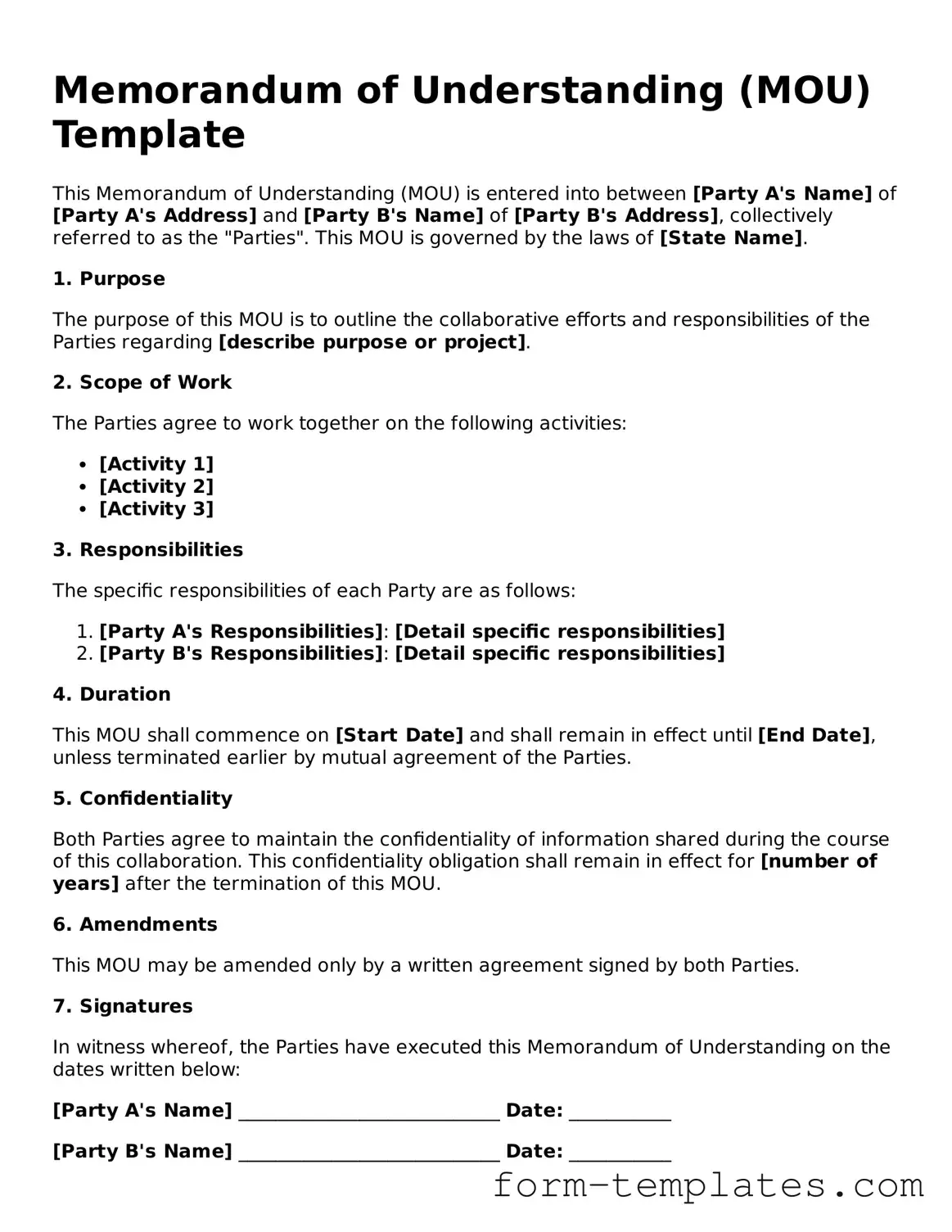Memorandum of Understanding (MOU) Template
This Memorandum of Understanding (MOU) is entered into between [Party A's Name] of [Party A's Address] and [Party B's Name] of [Party B's Address], collectively referred to as the "Parties". This MOU is governed by the laws of [State Name].
1. Purpose
The purpose of this MOU is to outline the collaborative efforts and responsibilities of the Parties regarding [describe purpose or project].
2. Scope of Work
The Parties agree to work together on the following activities:
- [Activity 1]
- [Activity 2]
- [Activity 3]
3. Responsibilities
The specific responsibilities of each Party are as follows:
- [Party A's Responsibilities]: [Detail specific responsibilities]
- [Party B's Responsibilities]: [Detail specific responsibilities]
4. Duration
This MOU shall commence on [Start Date] and shall remain in effect until [End Date], unless terminated earlier by mutual agreement of the Parties.
5. Confidentiality
Both Parties agree to maintain the confidentiality of information shared during the course of this collaboration. This confidentiality obligation shall remain in effect for [number of years] after the termination of this MOU.
6. Amendments
This MOU may be amended only by a written agreement signed by both Parties.
7. Signatures
In witness whereof, the Parties have executed this Memorandum of Understanding on the dates written below:
[Party A's Name] ____________________________ Date: ___________
[Party B's Name] ____________________________ Date: ___________
